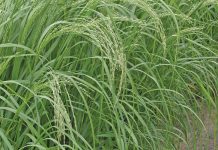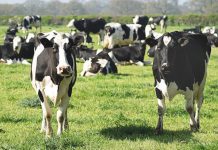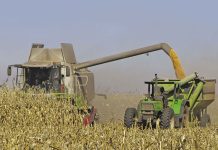Cattle farmer Jacob Mphafudi has won a string of awards, including several for his outstanding pasture conservation, including a 1987 trophy from the Grassland Society of Southern Africa. In 2005 and 2006 he took home the Vleissentraal trophy for best weaners above 260kg, and in 2007 he was named Pick ‘n Pay/Landbouweekblad Breeder of the Year Jacob was born in 1929 in Tooykraal, a small village near Leeupoort tin mine in Thabazimbi, on a 10 000ha farm which belonged to Evart Miller of Vereeniging.
His parents named him Leburu (“Farmer”). “For money we sold milk and firewood to other villages, off the farm, using my father’s ox wagon,” he recalls. In 1950, Jacob earned his teaching certificate, and taught for a few years at the Nylstroom Methodist School before he was promoted to a school inspector.
There he rediscoverd his passion for farming. As an inspector he travelled extensively, and met a lot of cattle farmers. “I used to visit agricultural schools in various provinces, occasionally spending a night or two there,” he remembers. “I developed an interest in cattle farming, and decided to run my own herd on a part-time basis.” A t the time, Jacob’s former headmaster, William Mohape, was preparing to sell his cattle. “It was a herd of at least 10 ordinary grade Afrikaners that I got at a bargain,” Jacob recalls. “I used three months’ wages to buy them.”
Jacob kept the cattle where they were on municipal land in Nylstroom, adding new stock until he had a herd of over 50. At the time, black- and white-owned cattle weren’t allowed to graze the same land, and the municipality had divided the land into two camps. Unfortunately, Jacob’s camp was infested with poison leaf (Dichapetalum cymosum), which grows actively in early spring when all other plants are still dry and brown. It was after a good summer rain that Jacob “nearly took a rope to the nearest tree”. He’d suffered a cattleman’s worst nightmare, losing over half his stock to the poisonous plant. O nly cattle reared on that land survived.
“They’d already adapted to the plant,” Jacob explains. “I swore to myself I’d never do cattle again in my life.” Instead, he entered the clothing business, travelling to Johannesburg for stock which he sold to his colleagues and the community. “I made good profit and wanted to expand, so I decided to sell the rest of the cattle,” he recalls. t the auction in Nylstroom, however, he realised his profit was double what he’d initially paid for the cattle. “I changed my mind about abandoning cattle farming,” he recalls. Instead, he used his savings from selling clothes to buy more cattle, which he moved back home to Tooykraal.
A full-time enterprise Jacob registered his Afrikaner stud in 1975. “Back then government prohibited farming with foreign breeds and only local breeds were available,” he recalls. “The Afrikaner was ideal for emerging black farmers.” Still farming part-time, he bought his first pure Afrikaner bull from Attie Geldenhuys of the then-Orange Free State. In 1976, just before the Soweto uprising, Jacob resigned from his post as an inspector to pursue farming full-time.
He’d already befriended a number of top cattle farmers. Lewies Claasen from the Free State and Sannie Greef of Zeerust in North West, then Bophuthatswana, helped him establish his Afrikaner stud herd. Jacob’s operation was growing and he needed more land, so he leased a 1 800ha farm in Leeukraal near Hammanskraal, where he still operates. “I got the farm on a 10-year renewable contract term,” he says. In 1982, after 20 years with Afrikaners, Jacob switched to crossbreeding Charolais, Simmentalers and Bonsmaras to obtain higher weaning weights.
“These three breeds also produce more milk,” he says. “This has improved my operation by giving me better quality cattle and increasing my turnover.” In 2002 he bought the 3 200ha farm Goldreef in the Mankwe district in the North West province, after leasing it for more than seven years. Optimum grazing The 1 800ha farm in Leeukraal is divided into 17 camps where Jacob runs a herd of 200 cattle, while Goldreef is divided into 30 camps carrying over 500 cattle. “Since Leeukraal has more bushveld, the cattle need about 8ha/head to graze comfortably and conveniently,” he explains. “Goldreef has less bush and trees, and works out at about 5ha/head as there’s more grass per hectare”. Jacob’s award-winning pasture conservation is based on his belief that being a good cattle farmer entails good soil and grass-farming practices.
He prioritises pasture management, especially on smaller farms, and doesn’t allow overgrazing. “Overgrazing can lead to soil erosion, which makes it difficult for the grass to grow once it has been uprooted,” he explains. He therefore ensures rotation of grazing camps and never allows too many cattle in a small camp. Previously, Jacob also embarked on a bush-clearing programme at Goldreef, clearing 100ha of land with a hired bulldozer and establishing large areas of buffel grass (Cenchrus ciliaris), which substantially increased his grazing land.
“This has helped, because now I can stockpile the grass for future use and for harsh times,” he saBreeding and culling For breeding, Jacob runs his bulls with the cows from December until at least June, depending on the bulls’ fitness and the cows’ fertility. “I use one bull on 25 to 30 cows, also depending on the bull’s fitness,” he says. The calving period is between October and December. During the breeding season, the cattle are divided according to breed in different camps. “Heifers weighing under 300kg aren’t run with bulls,” says Jacob. “I also use lighter bulls on my heifers.” Running heifers with stronger or heavier bulls might jeopardise the survival of the calf or the cow.”
Jacob culls all underperforming animals and those underweight at weaning time, and markets them at Vleissentraal, Waterberg. He says aggressive animals or those with poor conformation, such as small mouths, bad legs or bad backs, are also culled. “Because cattle graze in motion, a cow with a small mouth consumes less food as it moves, so it loses more weight than it gains,” he explains. “A cow with a bad back has difficulty carrying a calf up to the normal time.” The cattle are marketed directly from the farm. Contact Jacob Mphafudi on 082 780 2060.








